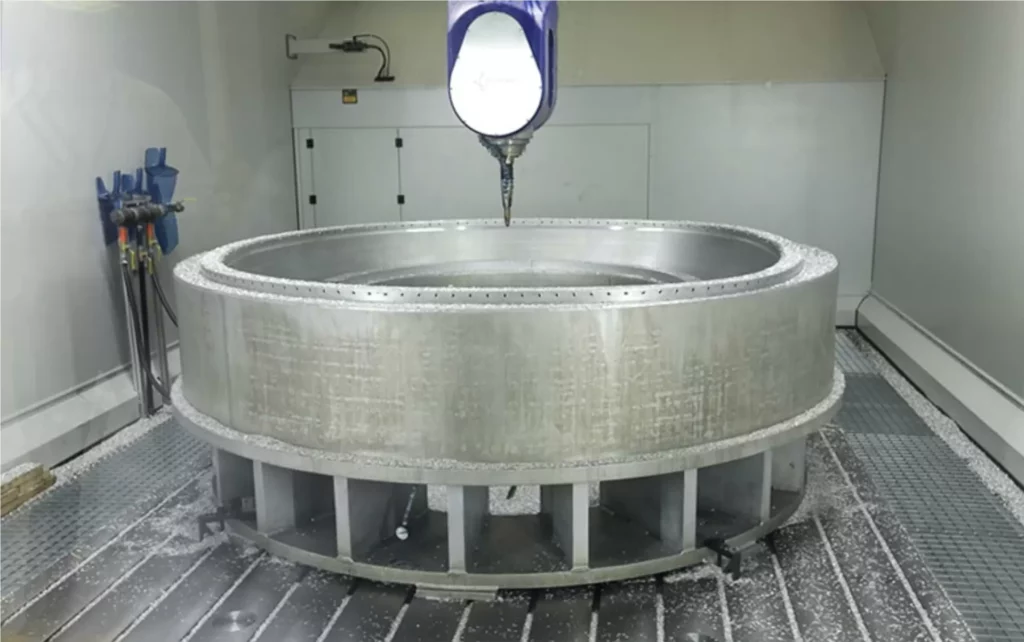3D printing services are almost the industrial staple for making quick product prototypes at affordable rates. With the aid of a design file, a desktop 3D printer, and filaments, businesses can manifest product ideas and concepts in physical forms in as fast as 24 hours.
As impressive as 3D printing is, it does have its limitations. One of such limitations is the printer bed size. 3D printing will struggle to make large parts at the same level of economy and efficiency as smaller parts. What then do you turn to when you need a prototype fast and affordably, and your part size exceeds the range of a 3D printer? In today’s article, we explore some excellent solutions for rapid prototyping of large scale parts.
1. Aluminum Extrusion
Aluminum extrusion is an excellent solution for making prototypes that are very big in size. Their default profiles come in varying shapes, sizes, and lengths. Extrusions for aluminum are also relatively easier to process, cut, fasten and combine with other materials for the perfect prototype.
The aluminum material itself is strong and lightweight. It is also very affordable, making it a top solution for low-volume sample runs and rapid prototyping.
Depending on your prototype’s overall size, you may find the right profile and length for you in one go. You may also opt to finish your prototype through an extrusion process that uses plenty of fasters to secure corners and joints.
Aluminum is available in many series ranging from the 1000 to 7000 series. Each series of alloy hosts an array of physical and mechanical properties that will be relevant to the cosmetic appearance, functionality, strength, and performance of your prototype.
2. CNC Machines
CNC machines consist of lathes and mills. The entire CNC machining process is a significant upgrade from traditional part machining, where digital instructions are programmed onto the device to aid the prototype’s production. These digital instructions feature a set of commands that dictate the tool paths that direct the cutting or milling tool on cutting at the block of material.
Aside from being known for high accuracy and precision, CNC machines can produce excellent prototypes from both small and large material blocks. CNC machines can machine a diverse range of materials. These include metals, plastics, wood, glass, and other material composites.
While it is unlikely that a CNC machine will execute a massive prototype in one go, it is undoubtedly capable of making those parts in two to three runs. It is imperative to understand that you will need to factor a fastening solution into place to combine individually large pieces into the final product prototypes efficiently.
Solutions like fasteners and hinges are popular in small to medium scale projects, while some welding may be required for significantly larger parts. Other important considerations are the weight of the material, machine tools, part geometry, and collision likelihood while machining.
3. Sheet Metal Cutters
Another great solution for processing large scale prototypes are sheet metal cutters. These may include equipment like CNC routers, water jet cutters, plasma cutters, and other laser cutters. These processes can deliver outstanding accuracy when paired with CNC machines and offers excellent reach and solutions for making complex prototypes with large dimensions.
These machines, like CNC, can cut through a myriad of materials. Once finished, you will require a creative solution to put the parts together. You may again opt for welding or fasteners. Innovative solutions may involve the creation of interlocking pieces or jig-saw like patterns. Here, large parts can fit into each other to create the final shape in the desired dimensions.
4. Clay modeling
Clay modeling remains a staple in the automotive industry for all the right reasons. It is used to make non-functional but precise iterations of vehicle designs before subsequent prototyping processes commence.
Automotive designers argue that clay modeling allows for a more concise evaluation of the design. Making life-sized clay models of the vehicle can help spot design imperfections and improvement areas before expending more costs.
It is significantly cheaper than metal and plastic. It is also more malleable and easier to apply when making bigger than regular parts. Clay modeling, also called industrial plasticine, uses digital manufacturing (CAD) to make accurate and precise prototypes scanned with laser technology. Clay models are usually used for making 1:4 and 1:1 emulations for critical design evaluation.
5. 3D Printing (Hacked)
If 3D printing remains your only immediate option, you may be able to work around the size limitations and still make a sizeable 3D-printed part. The solution here is to print your model in multiple units of smaller pieces so that it fits on your print bed, and find a way to secure the parts together afterward. You may choose to use strong adhesives, glue, or weld these parts together.
If you try to print large parts at a go, the chances are you will end up wasting time and money as it won’t be cost-effective, and the part may still fail due to stress build-up or insufficient print bed size.
When printing large scale parts, FDM is the best solution for cost-effectiveness. There will, however, be some compromise on quality and resolution. SLA and SLS can be employed where you need a large prototype with a commensurate resolution finish.










